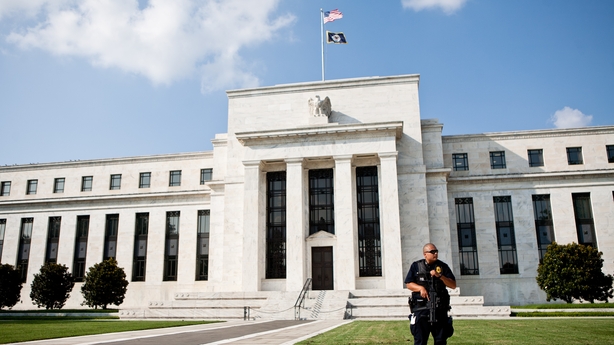US employers maintained a strong pace of hiring in October and boosted wages for workers, which could effectively seal the case for a December interest rate increase from the Federal Reserve.
Non-farm payrolls increased by 161,000 jobs last month, the Labor Department said today.
August and September data was also revised to show 44,000 more jobs created than previously reported.
The unemployment rate fell one-tenth of a percentage point to 4.9%, partly due to people dropping out of the labour force.
The closely watched employment report was published four days before the November 8 presidential election.
It came on the heels of data last week showing an acceleration in economic growth in the third quarter. But economists see little impact from the report on an increasingly bitter and divisive campaign.
Though the Fed is expected to increase borrowing costs next month, that decision will likely depend on the outcome of next Tuesday's election.
The tight race between Democratic candidate Hillary Clinton and her Republican rival Donald Trump has rattled financial markets.
Economists polled by Reuters had forecast payrolls increasing by 175,000 jobs last month and the unemployment rate falling one-tenth of a percentage point to 4.9%.
The Fed earlier this week left interest rates unchanged but said its monetary policy-setting committee "judges that the case for an increase in the federal funds rate has continued to strengthen."

It lifted its benchmark overnight interest rate last December for the first time in nearly a decade.
The trend in US employment growth has slowed as the labour market nears full employment and the economy's recovery from the 2007-09 recession shows signs of aging.
Employment growth so far this year has averaged 181,000 jobs per month, down from an average gain of 229,000 per month in 2015.
But the monthly job gains are still more than enough to absorb new entrants into the labour market.
Fed Chair Janet Yellen has said the economy needs to create just under 100,000 jobs a month to keep up with growth in the work-age population.
The prospects of an interest rate hike next month were also bolstered by a solid rise in wages.

Average hourly earnings increased 10 cents or 0.4% in October after advancing 0.3% in September.
The lift from a calendar quirk pushed the year-on-year increase to 2.8%, the biggest gain since June 2009, from 2.6% in September.
The Fed on Wednesday struck a fairly upbeat note on inflation, saying price pressures had "increased somewhat since earlier this year."
Despite the labour market nearing full employment, wage growth has been moderate. Economists blame this on a low labour force participation rate.
The participation rate, or the share of working-age Americans who are employed or at least looking for a job, fell 0.1 percentage point to 62.8% last month, not too far from multi-decade lows, in part reflecting demographic changes.
The solid payrolls gain accompanied by the surge in wages could support consumer spending heading into the Christmas season, and in turn keep the economy on a relatively higher growth path.
While the household survey showed a increase in the number of people saying they could not get to work because of bad weather, the department said it was difficult to assess the impact of Hurricane Matthew on job growth last month.
The storm lashed the east coast of the country last month, causing extensive flooding. The average workweek held steady at 34.4 hours.
Today's figures also show that US manufacturing employment fell 9,000 last month, falling for a third month in a row. Construction payrolls increased 11,000, rising for a second month.
Retail sector employment surprising fell 1,100 jobs, despite expectations of a jump in early Christmas season hiring.
Professional and business services payrolls rose 43,000. Temporary-help jobs, a harbinger for future hiring, increased 6,400. Meanwhile, US government employment rose by 19,000 jobs.

